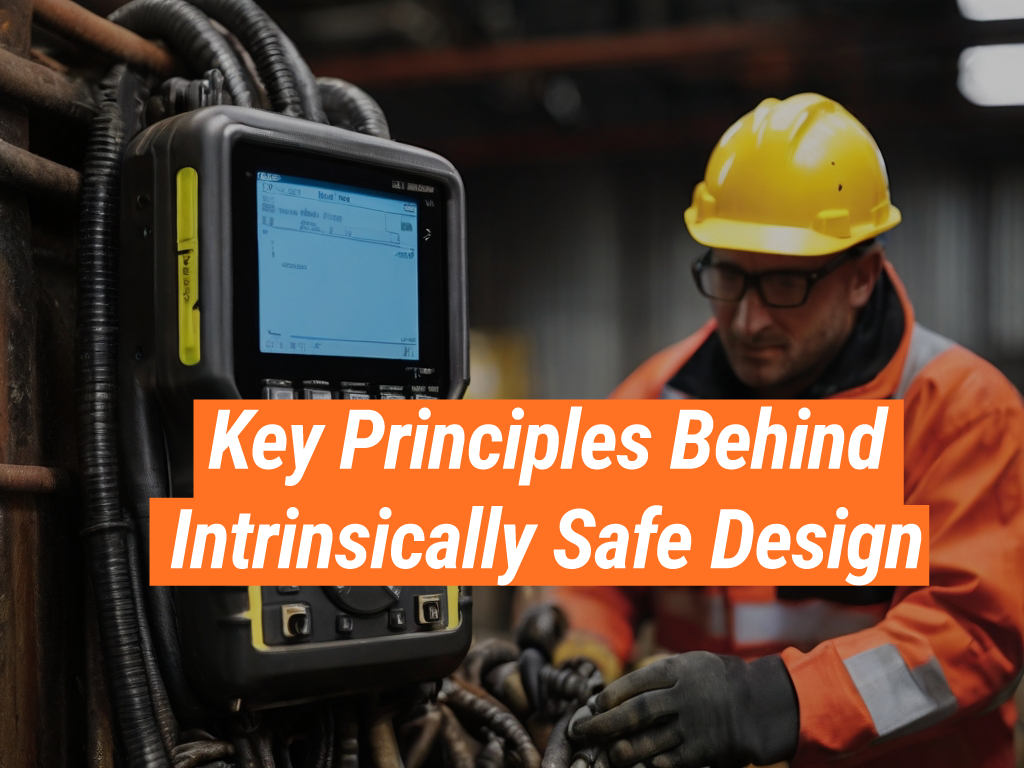When it comes to safety in hazardous environments, nothing is more critical than the concept of Intrinsically Safe Design. The Intrinsically Safe Store designs this principle, which is at the heart of the products they offer, to prevent explosions in hazardous areas by always ensuring that the energy available for ignition is low. In this article, we will delve into the key principles behind this crucial safety concept. We invite you to explore our website to learn more about our range of intrinsically safe products.
What is Intrinsically Safe Design?
Designers apply the Intrinsically Safe Design protection technique to electrical equipment and wiring to ensure they cannot release enough energy, under normal or abnormal conditions, to cause an ignition in a hazardous environment. Industries such as oil and gas, mining, chemical, and pharmaceuticals widely use this design principle, where the risk of explosion is high.

Key Principles of Intrinsically Safe Design
Understanding the principles behind Intrinsically Safe Design is crucial for anyone working in hazardous environments. Here are the key principles:
- Energy Limitation: This principle ensures that the electrical and thermal energy of a system is always low enough that ignition of a hazardous atmosphere cannot occur.
- Equipment Categorization: We categorize equipment based on the level of safety it provides. This categorization helps in selecting the right equipment for different hazardous zones.
Separation of Circuits: We must separate intrinsically safe circuits from non-intrinsically safe circuits to prevent energy transfer.
Benefits of Intrinsically Safe Design
Adopting Intrinsically Safe Design brings numerous benefits, including:
- Safety: The primary benefit is enhanced safety. By limiting energy to non-ignition levels, the risk of explosion is significantly reduced.
- Cost-Effective: Intrinsically safe equipment is often less expensive to install and maintain than other explosion-protection methods.
- Flexibility: Intrinsically safe equipment can be safely maintained and repaired in hazardous areas, reducing downtime.
Case Study: Intrinsically Safe Design in Action
A great example of Intrinsically Safe Design in action is in the oil and gas industry. Here, we use intrinsically safe equipment to monitor and control processes, which reduces the risk of explosions. For instance, we use intrinsically safe pressure transmitters to measure pressure in pipelines, ensuring it stays within safe limits.
This not only enhances safety but also improves operational efficiency.
Enhancing Safety with Intrinsically Safe Design
Intrinsically Safe Design is a critical principle in industries where the risk of explosion is high. By limiting energy to non-ignition levels, separating circuits, and categorizing equipment based on safety levels, this design principle significantly enhances safety. The Intrinsically Safe Store is committed to providing a wide range of intrinsically safe products that adhere to these principles. We invite you to contact us to learn more about our products and how they can enhance safety in your operations.


























